Showing 1–12 of 140 results
1000 Full Moons is an anthology of 21 articles and poems, written by the students and admirers of Guru Muni Narayana Prasad like Swami Tyageswaran, Swami Tanmaya, Swami Vyasa Prasad, Scott Teitsworth, Deborah Buchanan, Andy Larkin and a few other bright minds/scholars, on the occasion of his 80th birthday. It has serious philosophical essays, fond reminisces and a few poems along with some interesting photographs marking important events in his life. The book’s philosophical reflection is a continuum of the vision and teachings of Narayana Guru, a highly venerated spiritual guru, philosopher, visionary and social reformer, and his immediate successors, Nataraja Guru and Guru Nitya Chaitanya Yati. Guru Muni Narayana Prasad, as the successor to Guru Nitya Chaitanya Yati, is an epitome of great wisdom, and is fully dedicated to Guruhood in general and to the life and teachings of Narayana Guru in particular.
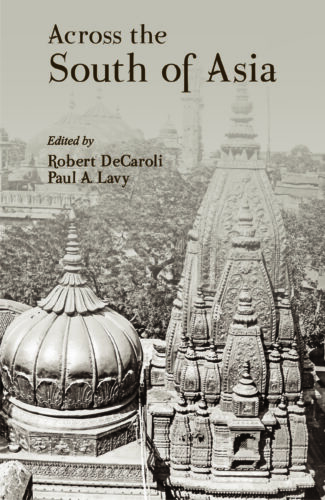
This collection of essays takes a broad view of South Asian art and culture by providing a wide geographic and chronological scope. Each essay on its own constitutes a solid, well-grounded academic study, but taken collectively they provide a wide and inclusive view of issues of art and material culture that span the region and invite comparison.
All too often, modern scholarship limits its scope according to the boundaries of contemporary nations and current geopolitical borders. Academic expertise frequently ties itself artificially to these pre-defined spaces and in so doing often does a disservice to the past. It is no great revelation to point out that people of the past defined the limits of their political and cultural reach in ways that were very different from those found on modern maps. Ancient rulers, merchants, and priests understood the reach of their influence and defined foreignness in ways that would be deeply unfamiliar to those only knowledgeable of the modern world. Yet, despite the well-recognized truth in these observations, it is still relatively rare for scholars to research in ways that transcend modern boundaries.
This collection of essays invites readers to take a broad view of South Asian art and culture by providing a wide geographic and chronological scope. The articles are united only by their focus on art historical and archaeological concerns and their concentration on South Asia ranging from Afghanistan to the island kingdoms of Indonesia. Each essay on its own constitutes a solid, well-grounded academic study, but taken collectively they provide a wide and inclusive view of issues of art and material culture that span the region and invite comparison.
By taking this approach, this volume is a tribute to Prof. Robert L. Brown whose lifetime of teaching has always emphasized connections as well as differences. Over his professional career, he has trained a large cohort of students (many of whom are contributors to this volume) whose expertise truly does reach across the south of Asia.
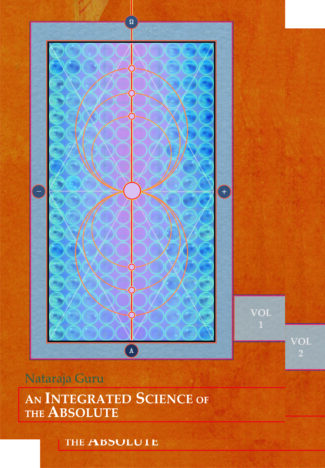
It is not just the magnum opus, but a truly monumental effort of a scientist-philosopher who has spent a whole lifetime to formulate a unitive science, wherein all disciplines of human questing could find a common ground a science where modern science and ancient spiritual wisdom could meet and merge like two opposite poles of a magnet. As a direct disciple of one of the great rishis of the modern age, Nataraja Guru discovers this common ground in Brahma-vidya?, which he calls the Integrated Science of the Absolute, and which has, at its base, his Gurus Dars?ana Ma?la?.
A string of hundred Sanskrit verses, composed by the mystic-poet, Narayana Guru (18541928), the Dars?ana Ma?la? is the very epitome of all visions of truth inspired by his remarkable acquisitions of Upanis?adic thought and, yet far more, by his own tapas (mystical discipline). Reproducing these highly significative verses in Roman script, along with English translations, word meanings, and extensive commentaries, Nataraja Guru not only spells out his mentors Visions of the Absolute in contemporary idiom, but also shows how these visions are fully validated by modern science.
Eclectic synthesis of varied scientific disciplines into a systematic whole is not all that Nataraja Guru accomplishes here. Rather, his book (now in third edition) is an attempt to reintroduce Brahma-vidya? as the one Master Science that embraces every branch of science, every human interest.
It is not just the magnum opus, but a truly monumental effort of a scientist-philosopher who has spent a whole lifetime to formulate a unitive science, wherein all disciplines of human questing could find a common ground a science where modern science and ancient spiritual wisdom could meet and merge like two opposite poles of a magnet. As a direct disciple of one of the great rishis of the modern age, Nataraja Guru discovers this common ground in Brahma-vidya, which he calls the Integrated Science of the Absolute, and which has, at its base, his Gurus Dars?ana Mala.
A string of hundred Sanskrit verses, composed by the mystic-poet, Narayana Guru (18541928), the Darsana Mala is the very epitome of all visions of truth inspired by his remarkable acquisitions of Upanisadic thought and, yet far more, by his own tapas (mystical discipline). Reproducing these highly significative verses in Roman script, along with English translations, word meanings, and extensive commentaries, Nataraja Guru not only spells out his mentors Visions of the Absolute in contemporary idiom, but also shows how these visions are fully validated by modern science.
Eclectic synthesis of varied scientific disciplines into a systematic whole is not all that Nataraja Guru accomplishes here. Rather, his book (now in third edition) is an attempt to reintroduce Brahma-vidya as the one Master Science that embraces every branch of science, every human interest.
Vedanta holds an unparalleled and unique place among the six systems of Indian philosophy. Though the Vedas are the fountainhead of Indian philosophical systems, Vedanta incorporates the philosophical thoughts resplendent in the Upanishads, the Brahmasutras, the Bhagavatgita, and in the commentaries on all these texts.
An Introduction to Vedanta introduces the Vedanta philosophy in brief and talks about its cardinal issues like self-control and the meaning of worship, maya and its gunas, upadhi, the theory of cycle, subtle bodies, the role of meditation, samadhi and its four major obstacles, Brahman realization and the state of a jivanmukta and his relation with Brahman and the world.
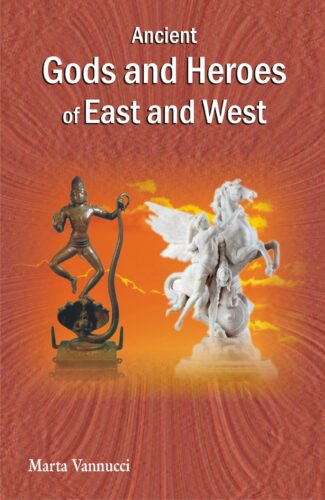
This book is an in-depth study of the people of nomadic groups of Central Asia notably, the Greeks, the ancient Iranians and Indo-Aryans of the Indian subcontinent from about 6000 bce to the last millennium bce. It deals with the evolution of cultures, migrations and settlements, myths and legends gods and heroes of the ancient cultures.
This book is a study of the people of nomadic groups or clans of Central Asia from about 6000 bce to the last millennium bce to explore why cultures and history developed the way they did in Central Asia by taking up the Indo-European and other settlements notably, the Greeks, the ancient Iranians and Indo-aryans of the Indian subcontinent for in-depth study. It deals with the quest for knowledge which led to evolution of cultures from simple primitive life to a society complex in structure, from philosophy to religion. The study of gods and heroes examines stories relating to migration and settlements and the geography of ancient civilizations. It is in this setting that their unique philosophies and religious beliefs flourished, giving rise to belief in numerous gods and heroes. It discusses the myths and legends of the ancient cultures, highlighting names, deeds and events relating to honoured gods and much-praised heroes. Dr Marta Vannucci significantly concludes that both Indo-aryan and Indo-Iranian people had been able to maintain their traditional customs and habits backed by technical developments up to the last centuries bce. Throughout, she bases her observations on reliable information provided by archaeology substantiated by oral and written traditions of Central Asia, Greece and Rome. The volume will be invaluable to scholars of history, anthropology and archaeology who are keen to systematically unravel the obscure origins of the great human civilizational march.

This book targets those persons who seek to learn about and understand the multiple forms of religious or spiritual or secular life, across the globe. It aims to foster mutual understanding, communication and dialogues between persons having different religious, spiritual and secular orientations.
The book, more than a philosophic endeavour, elaborately and meticulously discusses a vibrant thought – Are You Religious or Spiritual, or Atheist or Secular, or What? – for our deep contemplation and action, and suggests means to address the challenges that crop up in our spiritual life in a simple and lucid style. It is focuses on those persons who seek to learn about and understand the multiple forms of religious or spiritual or secular life. It aims to foster mutual understanding, communication and dialogues between persons having different religious, spiritual and secular orientations, and calls for a peaceful coexistence of people of different world views. In the present world spiritual scenario, it suggests a spiritual alternative of letting go with love and compassion, which is highly appealing. Also it gives an overview of the major religion of the world, keeping in mind both religious and non-religious people and persons from all walks of life. The unique feature of this volume is its down to earth practicality and simplicity in introducing, analysing and guiding its readers when dealt with a complex topic of religion and spirituality.
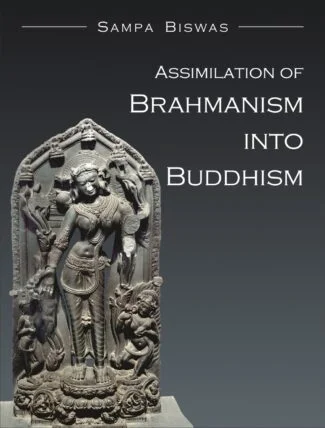
It has its focus on Buddhism and Buddhist art of early medieval period in India. The introduction of Tantrism bought Buddhism and Brahmanism closer to each other, both in enmity and similarity. It opened the gate to the vast field of Buddhist iconography, Tantric practices, deities, mudras and mandalas.
Assimilation of Brahmanism into Buddhism is a research work on Buddhism and Buddhist art of early medieval period in India. Archaeological materials and literary records suggest that Buddhism had a continuous existence during the third century bce to the thirteenth century ce in India. Though early Buddhism was totally different in its doctrines and faith from the Brahmanical system, the Buddhism of today is a religio-philosophical system having assimilated and adopted new ideas and beliefs from the environment in which it was born and nurtured.
The introduction of Tantrism bought Buddhism and Brahmanism closer to each other. It opened the gate to the vast field of Buddhist iconography along with Tantric practices, deities, mudras and mandalas. Many of these were influenced by the Brahmanic idea of godhead and some were the combination of one or more ideas of Brahmanic divinities. There was assimilation of a number of factors between Brahmanism and Buddhism.
This scholarly volume addresses the different aspects of this assimilation process by getting into a historical study of Hinayana and Mahayana Buddhism; outlining the political history, and socio-economic and religious changes during 300700 ce; scanning the political and economic background and the spreading of esoteric Buddhism; emergence of Vajrayana Buddhism; and providing a detailed sketch of Vajrayana images.
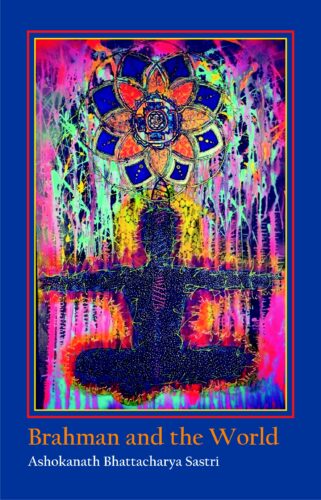
The Ved?nta has been rightly called the Finest Fruit of Indian Thought and the Upani?ads as the Finer Flowers. Ved?nta grows out of the teachings of the Upani?ads and passes into the various systems in the writings of ?a?kara, Bh?skara, R?m?nuja, Madhva and Vallabha, the great founders of Advaita, Bhed?bheda, Vi?i???dvaita, Dvait?dvaita and ?uddh?dvaita, respectively. However, there is a perception among Orientalists that while the Upani?ads favour the Monistic doctrine, B?dar?ya?as Brahmas?tra fundamentally opposes it on some of the most crucial points.
The book thus delves deep into the philosophies of both B?dar?ya?a and ?a?kara in enunciating the essential features of Brahman and Its association with the world. It thus discusses topics such as what sort of cause Brahman is?, and what sort of material causality is to be ascribed to It? It also addresses the conflicting views on the nature of Brahman like that of Vivarttav?da and of R?m?nujas Sagu?a-Brahman.
This book proposes to take up the question of Universal Causation to examine thoroughly as how far it is right to regard Brahman as the Universal Cause and how far s?trak?ra himself lent his support to each of the inter-conflicting schools of Ved?nta. This book should, therefore, benefit all who are devoted to the philosophic teachings of Advaita Ved?nta and its preceptors.
“The Vedānta has been rightly called the Finest Fruit of Indian Thought and the Upaniṣads as the Finer Flowers. Vedānta grows out of the teachings of the Upaniṣads and passes into the various systems in the writings of Śaṅkara, Bhāskara, Rāmānuja, Madhva and Vallabha, the great founders of Advaita, Bhedābheda, Viśiṣṭādvaita, Dvaitādvaita and Śuddhādvaita, respectively. However, there is a perception among Orientalists that while the Upaniṣads favour the Monistic doctrine, Bādarāyaṇa’s Brahmasūtra fundamentally opposes it on some of the most crucial points.
The book thus delves deep into the philosophies of both Bādarāyaṇa and Śaṅkara in enunciating the essential features of Brahman and Its association with the world. It thus discusses topics such as what sort of cause Brahman is?, and what sort of material causality is to be ascribed to It? It also addresses the conflicting views on the nature of Brahman like that of Vivarttavāda and of Rāmānuja’s Saguṇa-Brahman.
This book proposes to take up the question of Universal Causation to examine thoroughly as how far it is right to regard Brahman as the Universal Cause and how far sūtrakāra himself lent his support to each of the inter-conflicting schools of Vedānta. This book should, therefore, benefit all who are devoted to the philosophic teachings of Advaita Vedānta and its preceptors.”

This commentary volume contends that, from the Gospel accounts of Bible, one may perceive, in Jesus’s life and words, the same absolutist vision that underlies the teachings of Advaita Vedanta. Echoeing interreligious harmony, it invites non-Christians to visit the great enlightened guru in Jesus, and the Christians to imbibe the spirit of Advaita Vedanta in Jesus’s teachings.
The ocean of philosophical insight hiding in the words and story of Jesus Christ has influenced and charged millions of people and are still inspiring. The teaching and philosophy discerned across the four Gospels According to Matthew, Mark, Luke and John have stirred the philosophical perspective of Muni Narayana Prasad and it paved the way for him making a Gospel commentary in the light of Indian philosophy, Advaita Vedanta. In his scholarly attempt, the author has brought an apocryphal Gospel of Thomas too into its ambit.
Though the words of wisdom revealed by Jesus across these Gospels differ in language and style from Indian Vedanta, they reveal the same wisdom or supreme happiness that the Vedanta philosophy talks about. In this book, the author has attempted to explain the wisdom found in one cultural frame of reference as found in the other. That is, the teachings of Jesus Christ are elucidated in terms of the characteristics of Advaita Vedanta. Jesus, seen across these Gospels, always maintains his position of an enlightened seer (rishi). Thus the author calls him a sad-guru.
The author contends that from the Gospel accounts one may perceive, in Jesus’s life and words, the same absolutist vision that underlies the teachings of Advaita Vedanta. Echoing interreligious harmony, the author invites the non-Christians to visit the great enlightened guru in Jesus and the Christians to imbibe the spirit of Advaita Vedanta in Jesus’s teachings.
A must-collect, the book should find favour with the spiritual gurus, philosophers, and all progressive-thinking persons across religions.

This work, in simple language, is meant for non-Christians, particularly Hindus, who may be interested in knowing about Christianity, professed by about a third of the world’s population what it teaches, how do Christian doctrines compare with Hindu dictums, what are the various denominations, etc.
Christianity is the worlds largest religion today: about 33.6 per cent of the worlds population has Christianity as their religion. It is also a religion that struck roots early in India as early as middle of the first century ce. The book is an account on Christianity that blends aspects of Christian belief and worship with matters like its significance and the urgent need for interfaith understanding in the globalised and pluralistic societies of today. It is meant for non-Christians, particularly Hindus, who are keen to understand the essential aspects of the religion.
In simple language, the work reveals the essence of the Christian beliefs, its spread over history and its prevalence now, and its importance as a world religion. It examines doctrines of the Church, significance of Jesus Christ, and historical forms of Christianity like Roman Catholicism, Eastern Orthodoxy and Protestantism. It examines the history of Christianity in India. The interesting work refers to a number of religious works on Christianity and writings of men who commented on Christianity and personified its values like love, compassion and sacrifice. It also deals with some controversial features of the religion like its need to proselytise.
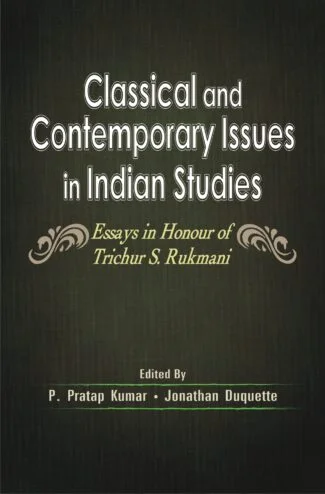
The book, a Festschrift volume in honour of Prof. Trichur S. Rukmani, focuses on diverse themes: Patanjali’s Yogasutras, Advaita Vedanta, Gaudiya Vaishnavism, Shaivism, grammar and epic literature. It also addresses issues of contemporary relevance relating broadly to non-violence, environment, gender and syncretism.
This book is a Festschrift volume in honour of Prof. Trichur S. Rukmani that reflects the plethora of issues which she studied in her scholastic life. It includes twenty-four essays by distinguished scholars on various classical and contemporary issues pertaining to Indian studies. While the volume discusses current research in the field of Yoga Prof. Rukmani’s primary research field it also invites further reflection on other areas of Indian thought which have attracted her attention in the course of her long and fruitful academic career.
The volume is divided thematically into six sections. The first two sections deal with the interpretation of the Yoga, Vedanta and Gaudiya-Vaishnava traditions, exploring issues of hermeneutics, methodology and philosophical analysis. The third section addresses issues of continuity within the Indian tradition and includes essays on tantric Shaivism, Mimamsa and the Bhagavad-Gita. The next two sections feature essays on the Sanskrit philosophical discourse, grammar, epic literature and renunciation in the Indian tradition. The last section of the volume takes up issues of contemporary relevance such as the insights from the Hindu tradition towards environmental ethics, the Svadhyaya movement and its dharmic ecology, non-violence, gender, cultural identity as well as syncretism.
The volume, including essays as diverse as Prof. Trichur S. Rukmani’s own scholarly interests, will certainly benefit all scholars and students of Indology, especially those concerned with the religious and philosophical traditions of India.
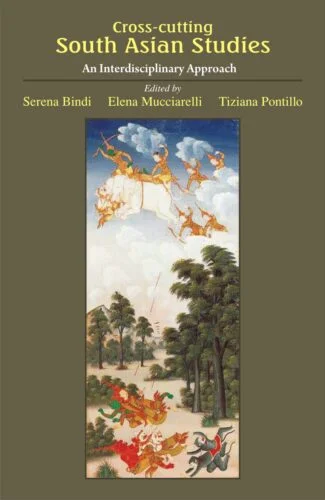
This volume deals with different issues related to religious practices and institutions in South Asia. It further seeks to substantiate the well-known opposition between the so-called orthodox sovereignty and the heterodox one, of which the so-called vratya-power seems to be a prime example.
This volume, Cross-cutting South Asian Studies: An Interdisciplinary Approach focuses on two themes that are central to Indological studies: religious practices and heterodox sovereignty.
The first part of this volume The Indian Ocean of Religious Practices: Past and Present deals with different issues related to religious practices and institutions in South Asia. These contributions share a similar theoretical perspective on religion: they all highlight, in various ways and through different disciplinary approaches, how, in order to fully understand religious practices and their inherent dynamics, it is essential to consider the power relations that continually imbue and shape them.
The second part Kings, Priests and Prominent Roles Interpreted through the Visual, Literary, Speculative, and Technical Indian Arts seeks to substantiate the well-known opposition between the so-called orthodox sovereignty and the heterodox one, of which the so-called vratya-power seems to be a prime example. Therefore, the target of the relevant contributions consists in focusing on different contexts where the king or chieftain, or merely the patron of the sacrifice, gains his temporary pre-eminence in an agonistic way which includes an important non-permanent ascetic dimension.
| There are no products |